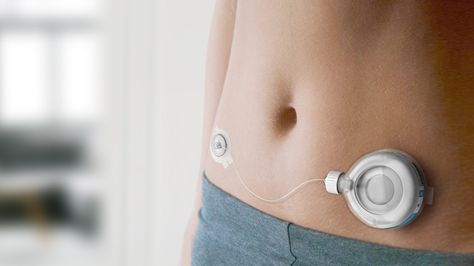In recent years, the healthcare industry has witnessed remarkable advancements in drug delivery systems, and wearable injectors have emerged as a revolutionary solution for patients requiring long-term medication administration. These devices provide a convenient, efficient, and patient-friendly alternative to traditional injections and intravenous (IV) therapies. Designed to be worn on the body, wearable injectors enable controlled, automated, and precise drug delivery over a specified period, reducing the need for frequent hospital visits.
The wearable injectors market is poised for significant growth, with a projected CAGR of 7.1% from 2023 to 2031. Valued at US$ 6.8 billion in 2022, the industry is expected to reach US$ 12.4 billion by 2031, driven by rising demand for self-administered drug delivery solutions, advancements in biologics, and the growing prevalence of chronic diseases such as diabetes, cancer, and autoimmune disorders. Increasing adoption of on-body and off-body wearable injectors, coupled with technological innovations like AI integration and smart connectivity, is set to revolutionize the healthcare landscape, making treatments more patient-centric, efficient, and accessible.
Wearable injectors are broadly classified into two types:
- On-body Wearable Injectors – Worn directly on the skin and designed for subcutaneous drug delivery.
- Off-body Wearable Injectors – Connected via a catheter and kept off the skin, minimizing direct contact.
These devices find applications in treating chronic conditions such as oncology (cancer treatment), diabetes, autoimmune disorders, cardiovascular diseases, and infectious diseases. This article explores the different types of wearable injectors, their applications, benefits, and the future of this technology.
Types of Wearable Injectors
- On-Body Wearable Injectors
On-body wearable injectors (OBWIs) are patch-like devices attached directly to the patient’s skin, usually on the abdomen or upper arm. These devices administer medication subcutaneously over an extended period, typically ranging from a few minutes to several hours.
🔹 Key Features:
- Compact, lightweight, and discreet design
- Pre-programmed drug delivery with minimal patient intervention
- Reduces the need for multiple injections
- Ideal for self-administration at home
🔹 Examples:
- Amgen’s Neulasta Onpro – Used for chemotherapy patients to reduce the risk of infection
- Insulet’s Omnipod – A tubeless insulin pump for diabetes management
- Off-Body Wearable Injectors
Off-body wearable injectors (OBWIs) differ from on-body versions as they are not directly attached to the skin but instead connected via a thin tube or catheter. These devices are typically used for large-volume drug delivery, where direct skin contact may cause discomfort or irritation.
🔹 Key Features:
- Suitable for high-viscosity medications
- Less skin irritation compared to on-body devices
- Provides flexibility in placement and comfort
🔹 Examples:
- Enable Injections’ enFuse – Used for large-volume subcutaneous drug delivery
- Medtronic’s MiniMed 780G – A hybrid closed-loop insulin delivery system
Applications of Wearable Injectors
- Oncology (Cancer Treatment)
Cancer treatments often require frequent and high-dose drug administration, which can be challenging for patients undergoing chemotherapy. Wearable injectors allow for:
✔ Continuous or intermittent delivery of chemotherapy drugs
✔ Reduced hospital visits and improved patient convenience
✔ Minimized side effects by ensuring precise drug dosage
Example: Neulasta Onpro is widely used for neutropenia prevention in chemotherapy patients.
- Diabetes Management
Diabetes patients need insulin injections multiple times a day, which can be inconvenient and painful. Wearable insulin pumps have transformed diabetes care by:
✔ Offering continuous insulin delivery without daily injections
✔ Enhancing glucose control and reducing complications
✔ Enabling remote monitoring via smartphone apps
Example: The Omnipod system eliminates the need for traditional insulin syringes or pens, providing a pain-free experience for diabetics.
- Autoimmune Disorders
Conditions like rheumatoid arthritis, Crohn’s disease, and multiple sclerosis require regular biologic therapy injections, which wearable injectors make easier by:
✔ Enabling self-administration at home
✔ Reducing pain and injection site reactions
✔ Enhancing patient compliance with treatment
Example: AbbVie’s Humira Pen for rheumatoid arthritis offers a needle-free drug delivery experience.
- Cardiovascular Diseases
For patients with heart conditions such as hypertension and heart failure, wearable injectors allow for:
✔ Continuous infusion of cardiovascular medications
✔ Improved medication adherence and patient outcomes
✔ Less dependency on hospitals and clinics
- Infectious Diseases
New advancements have led to the development of wearable injectors for vaccines and antiviral drugs, especially for conditions such as:
✔ HIV/AIDS treatments with long-acting injectables
✔ COVID-19 antibody therapy administered through wearable devices
Example: PharmaJet’s needle-free vaccine delivery system is gaining attention for its efficiency and patient comfort.
Benefits of Wearable Injectors
✅ Improved Patient Comfort – Eliminates the need for painful injections and frequent hospital visits.
✅ Enhanced Drug Adherence – Automated and programmed dosing ensures that patients receive the correct dosage without missing treatments.
✅ Minimally Invasive – Compared to traditional IV infusions, wearable injectors are less invasive and allow for more patient mobility.
✅ Reduced Healthcare Costs – Wearable injectors minimize hospital admissions and allow for home-based treatments.
✅ User-Friendly Design – Most wearable injectors are designed for self-administration, making them ideal for elderly and disabled patients.
Challenges and Limitations
Despite their numerous advantages, wearable injectors face some challenges:
❌ High Cost – Wearable injectors are expensive compared to traditional syringes and pens.
❌ Device Malfunction – Technical failures may lead to incomplete drug delivery.
❌ Skin Irritation – Some patients experience allergic reactions or discomfort due to prolonged skin contact.
❌ Regulatory Hurdles – Strict FDA and EMA regulations make approval and mass production complex.
However, continuous research and innovation are addressing these issues, making wearable injectors more affordable, reliable, and accessible.
Future Trends in Wearable Injectors
🔹 Integration with Digital Health & AI:
- Smart wearable injectors with real-time monitoring and AI-based drug dosage adjustments.
- Bluetooth-enabled devices that sync with mobile health apps for better patient engagement.
🔹 Expansion to More Therapeutic Areas:
- Development of wearable injectors for neurological disorders, pain management, and rare diseases.
🔹 Sustainability & Eco-Friendly Designs:
- Companies are working on biodegradable and recyclable wearable injectors to reduce medical waste.
🔹 3D Printing & Customization:
- Future devices may be custom 3D-printed to fit individual patient needs.








Leave a Reply